Even if you look after your tractor tyres and regularly check to make sure they're at the right pressure, you're still not safe from tyre cuts, which can happen to any tyre that's used regularly on different types of soil and for a variety of purposes.

Whether you're driving on a road and fully loaded with harvested crops, or moving across the farmyard, driving down paths or ploughing fields, your tyres are subjected to all kinds of stress and are prone to many different kinds of cuts.
Sometimes these cuts are totally harmless, and other times they can render the tyre unusable.
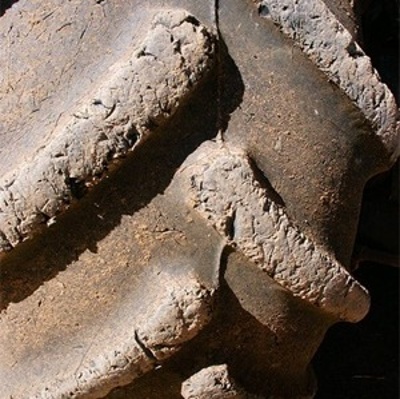
Cuts on the lugs
If the lugs are scratched and ripped across their entire surface, with straight cuts crossing over tears on the leading and trailing edges, it means the tyre has been driven over hard flint terrain or is mostly used for working in the farmyard or on rocky ground.
As long as there are no cuts on the tyre's sidewalls, which can be more serious because the rubber is less thick than the lugs, you can continue to use the tyres provided you check the sidewalls regularly. However, remember that using a tyre like this in the fields will be much less effective because the damaged lugs will have very little tractive capacity remaining.
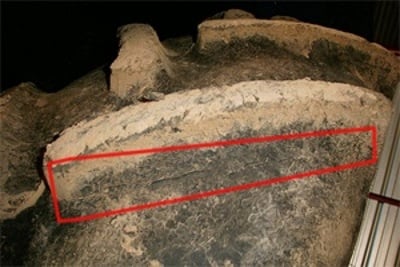
Cuts at the base of the tyre lugs
You see cuts on the base of the lugs, starting from the tip and running horizontally along its length.
This type of cut is a sign that the tyre is very fatigued, and has been subjected to excessive tractive force on hard soils due to excessively heavy loads being transferred to the axle.
Excessive twisting of the lugs on the ground has caused them to shear, and parts of them may have torn off completely, leading to strong vibrations and potential loss of control of the tractor.
You can continue to use tyres like this provided the load is not excessive and you drive slowly on roads, but it is recommended you replace them.
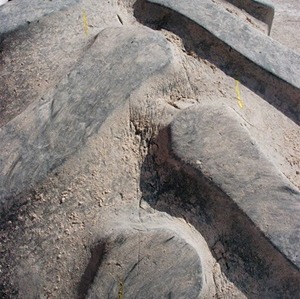
Cuts at the back of the structure only
The tyre seems to be in good general condition, but there are small cuts on the back of the structure between the lugs.
This type of cut is due to very hard stubble, such as sunflower or maize.
There are no problems with this tyre, but you should continue to inspect it carefully for signs of deeper cuts that would require repair.
This is because a deep cut may be hiding a breakage inside the tyre structure, and will pose a risk of high pressure if you drive on a road at higher speeds.
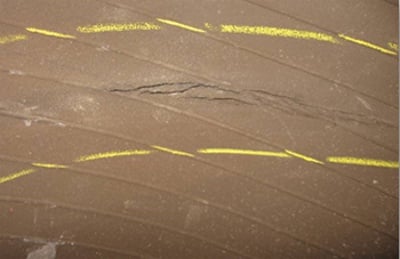
Cracks in the tyre rubber
Cracks in the butyl rubber are typically caused by repeated flexing or deflection when the tyre is used for too long while under-inflated, or driven on when flat or stored over winter when flat.
The tyre's internal structure has been considerably weakened, and the rubber is highly fatigued.
This tyre cannot be used and must be replaced.
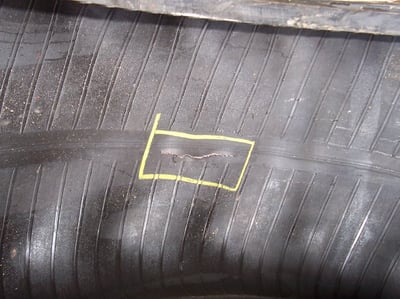
Cut on the tyre casing
Now it's the structure of the tyre itself that has been cut, usually after a frontal impact or driving over a sharp object, piece of metal, etc.
When the casing has been cut, the tyre is completely unusable and irreparable – it will not withstand the pressure build-up and therefore must be replaced.
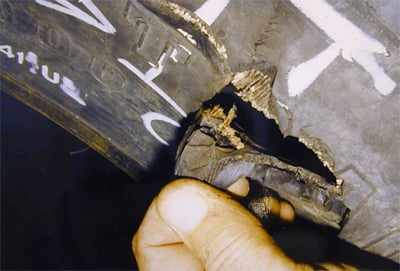
Tear to the tyre sidewall
Often caused by a sharp piece of flint, tree branch or metal object (like a tool or old scrap), the sidewall is not as reinforced as the tyre tread and will be very fragile if torn.
Do not attempt to repair, as the patch would come off very quickly when the tyre flexes.
The tyre must be replaced.
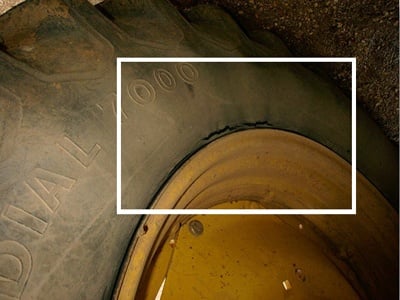
Cut on the base of the rim
A cut on the ply return or at one end of the reinforcement.
This type of cut is often caused by overloading combined with insufficient tyre pressure during road use.
There is no way this can be repaired, so the tyre must not be used.
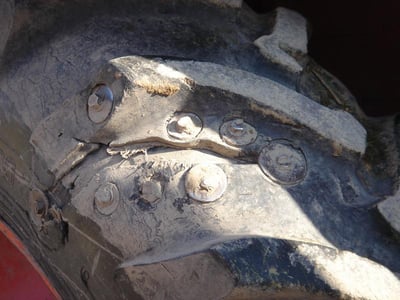
Be careful with your safety with an improvised repair
You've always got your trusty screwdriver handy, and when there's the chance for you to save a bit of money you think you can pull off miracles!
Tyres are an essential part of your tractor, as they're what transfers power from your machine to the ground.
No makeshift repair work by you (however pioneering it might be) will make your tractor safe to drive – there's a very real danger the vehicle might overturn if the tyre bursts when the tractor's loaded, and if you break down in the middle of a field when your DIY repair gives up on you, it'll cost a lot more than a new set of tyres.
To learn more and boost your farm's profits, Bridgestone Agriculture is offering you a free, detailed eBook that explains the essential role your agricultural tyres play in your productivity.
The most people who have read this article have also read the following articles, which are listed below in order of popularity:
This information is intended only to make you aware of the technical and functional aspects of agricultural tires and their use. It does not allow you to make a judgment or a definitive conclusion on a given problem. Only your agricultural tire expert is able to make a technical assessment and take a final decision, case by case.

BRIDGESTONE EUROPE NV/SA
AG Department
Leonardo Da Vincilaan 1
1930 Zaventem | Belgium
Our regional office:
Athena Drive, Tachbrook Park
Warwick CV34 6UX
United Kingdom